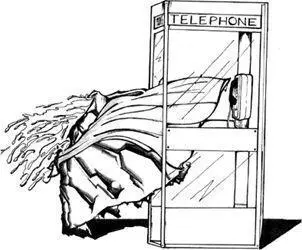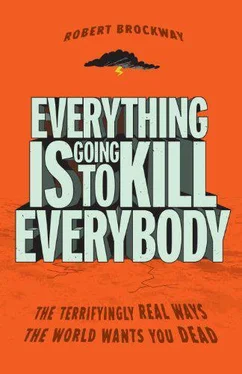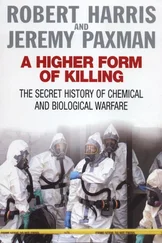That shit is being built right now, destined for the skies above California, and it will be operational by 2016.
And you promised to pay them, California. You know what happens to people who don’t pay their debts to shady loaners? They get their legs broken. Your loan shark has a hurricane laser, and everybody is well aware that you’re broke as hell.
This begs an interesting question: Can an entire state go into the Witness Protection Program?
Nobody kills like Mother Nature. She is the undisputed master of terror—inventor of the spider and the giant squid, producer of the parasite and the flesh-eating bacteria. If Gaia is the source of all life, she’s also the cause of all death. And while death is a natural, necessary part of the circle of life, some of her methods seem like downright overkill; if we’re all going to die of old age, having the Earth explode and then drown itself in fire just seems a bit mean spirited, doesn’t it?
But hey, love her or leave her, you owe your life to Mother Nature, and you live all of that life on her very body. And judging by the following examples, she really fucking hates you for it.

THINGS WITH THE prefix “super-” are almost always fantastic: Superman? So much better than a regular man. Where would we be without him? Crushed beneath the heel of Lex Luthor’s Angro-bots, that’s where. Stunt comedian Super Dave? Just like a regular Dave, but five times more hilarious. Supersize it? Fuck yes! What do I look like, aguy who eats regular-size meals? You add “super” before a word and it’s like marketing crack. Super anything is great!
Just all around fantastic.
Really.
No exceptions.
Well, maybe one exception: the supervolcano. That’s not so great. If you were hoping it was “super” like Superman—a regular volcano given superpowers to protect humanity—it’s not. But it is sort of like supersizing: It’s a volcanic eruption so big the whole world can share! Finally, something that touches all of mankind!
…and turns them into screaming ash .

A supervolcano occurs when magma builds up below the crust of the Earth, but can’t quite break through. All the heat, the gas, and the pressure—it all keeps building up until the Earth just can’t take the pressure anymore and bursts. So to sum up: A typical volcanic reaction is like a normal person throwing a fit—a little eruption just to vent the pressure, but generally keeping the devastation to reasonable levels. But sometimes the planet just holds all that fury inside until it snaps. Except by “fury,” I mean burning rock, and by “snaps,” I mean superexplodes .
There have been only a handful of these supervolcanoes in all of history, but just those few have been responsible for mass extinctions, global weather changes, and sometimes even small ice ages. Supervolcanoes must, at the minimum, consist of at least 1,000 cubic kilometers of magma. That’s basically a small country’s worth of material, and it’s all lit on fire and flung through the air . The eruption would trigger massive earthquakes, the lava would burn through everything for thousands of miles around, and the ash would choke out the light from the sky. They even keep destroying after they stop: Supervolcanoes don’t leave cones like a normal volcano; they create massive calderas more akin to an impact crater, because so much mass is ejected that the Earth simply collapses around it.
Maybe it can be of some small comfort to you if you consider that the last supervolcano was a long, long time ago. Why, over twenty-six thousand years ago as a matter of fact! I can barely remember starting to write this sentence, so twenty-six thousand years is a lot longer than I can even comprehend. And if you’re anything like me, that’s enough time to make you feel safe—shielded by the buffer of history. It matters little that the second-to-most-recent supervolcano, over seventy-five thousand years ago at Lake Toba in Indonesia, caused a volcanic winter, triggering an ice age that lasted for more than a thousand years, killed off between 70 and 90 percent of the human race (depending on which estimate you use), and formed sulfuric acid in the fucking atmosphere (you know, that thing you breathe in, and live inside of? That was acid). Hey, just as long as it’s not happening right now, you shouldn’t have to worry about history. Because let’s face it, if you paid attention to history you’d never leave the house; that shit is terrifying.
How to Deal with a Supervolcano
• Duck and cover
• Sit and spin
• Bump and grind
• Whatever else distracts you for a brief moment from the burning inferno that you now call home
Wait, sorry, I’m getting an imaginary note passed to me here.
One second while I pretend to read this…
Historians call this the “Ostrich Defense” and some observers [1] Observers are hungry lions.
note that this method has a 100 percent success rate.
Oh, awesome! Says here that a supervolcano could actually be about to erupt right now— right fucking now, right in the United States of America .
You might know ground zero: Yellowstone National Park, home of postcards that your grandparents send you, scenic vistas, Old Faithful, and, apparently, terror. The single most potentially destructive volcano on Earth, the Yellowstone Caldera in Wyoming, is now showing strong signs of becoming active again. It’s not only a proven supervolcano—Yellowstone has had previous supervolcanic eruptions, 2.1 million, 1.3 million, and 640,000 years ago—but it’s also a “geothermal hot spot.” Supervolcanoes and geothermal hot spots are like a disastrous peanut butter and a devastating jelly: The two don’t always go together, but they’re exponentially improved when they do. The hot spot beneath Yellowstone refers to the end of a gargantuan plume of magma, the molten rock that swirls around in the Earth’s mantle below the solid rock of the surface. Under ideal circumstances, that plume would peter out about fifty miles underground, but not in this case: Just the tip of this mantle plume is several miles wide, and it’s been sitting down there for thousands of years, slowly melting the underside of the Earth’s surface away, until it has eventually encroached to within a few hundred meters of ground level. But while the tip of this mantle plume is scary enough, you actually have to worry about the entire thing if it bursts. Just like an overinsistent teenager, what starts with “just the tip” will inevitably end with a full-on shaft. If any part of the plume breeches, the vast pressures beneath will force all of it out. And all there is right now is the thinnest veneer, a sheer G-string of dirt, really, that’s keeping that entire hot, smoking shaft of fiery death from spurting all over the Earth like the devil’s money shot.
The chief indicator that the Yellowstone Caldera might be becoming active again comes in the form of a recent “swarm” (worryingly enough, that’s actually the official term) of earthquakes registered there. At the end of 2008 there was a period of rapid-fire, low-level tremors in and around the Caldera—around eight hundred separate earthquakes in just under a week, which, if you’re counting, is 799 more earthquakes than it takes to scare the shit out of everybody under the best of circumstances, much less when they’re emanating from a giant organic time bomb like the Caldera. Robert B. Smith, an emeritus research professor of geology geophysics at the University of Utah, believes the unusually high earthquake activity could be a sign that the volcano is reawakening. Or, as Professor Smith himself puts it:
Читать дальше














